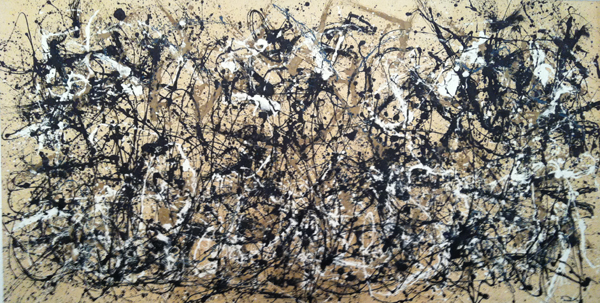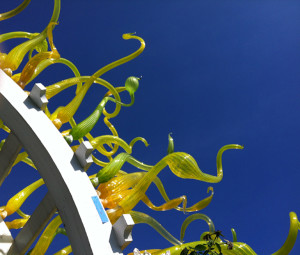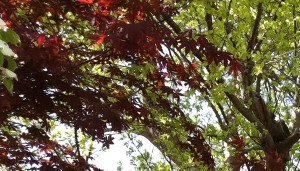I Can Do That. (Really?)
Considering what is art is a challenging endeavor. Some people who proclaim themselves non-artistic have strong opinions about what is art and what is not. It is reasoned that it’s not art, if they (the non-artist) can do it. Their logic goes like this: “I’m not an artist, so if I can do it, it’s not art”.
Their assumption is that some of the things they view in museums, galleries, or art books are so slap-dash, so splattered, so random, that they could certainly do it. Then along comes an artist who tells them it’s valid art, and the fireworks begin.
They are aghast that an artist like me, a creator of fun, whimsical, kid-friendly art, would like any of this “garbage”.
I try to explain why this art is legitimate and that they, in all likelihood, couldn’t do it. Heads butted and egos bruised, we usually part company under a truce whereby we “agree to disagree”. If we followed the pattern of human weakness, we probably oversold our respective arguments. I likely defended art that I too scratch my head over. They (I hope, I hope) regret that they made a brash claim to artistic competence they know deep inside they don’t have.
Painting Rhythm
The painting shown above is Autumn Rhythm by Jackson Pollock (b.1912-d.1956). It’s in the Metropolitan Museum of Art in New York City.
Modern art is judged by many as outrageously high priced put-ons. Those who claim to like it are often condemned as oddballs advancing social disorder. I’ve found myself in the unpleasant position of making a case for Pollock, only to regret that I came off as a self-impressed Bohemian, droning on about “art for art’s sake”. I feel bad that somewhere in the discussion I manage to make myself look “enlightened” and my opponent look like a dim bulb.
Jackson Pollock
Suffice to say, Autumn Rhythm was the product of a troubled soul. I don’t pretend to know what was going on inside Pollock’s mind when he painted. Whether he was building up or tearing down, I can’t say. What I can say is that Autumn Rhythm inhabits the basic elements of any art: line, composition, values, color scheme, directed tension. I can also say, in good conscience, that it’s wildness is a valid interpretation of reality.
I suggest you try looking at it as controlled wildness. Autumn Rhythm really does have considerable orderliness. Do you notice the careful distribution of white and black and tan swirls? Can you see the flow of lines carried across the canvas in a determined way? Follow the interwoven patterns and try to see a method to the madness. Squint your eyes to see the value structure; the play between lights, darks, and mid-tones.
Pollock would lay his canvas on the floor and move around it dripping house paint from a brush or paddle. It’s obvious he didn’t close his eyes and toss paint. There is too much care in how the lines and colors come out. See how the painting is heavier on the bottom that the top? There is more open space at the top, like you might see on a tree lined ridge against an Autumn sky. Is it a landscape painting? Is that what he intended? Honestly, I don’t know, but then, maybe his detractors don’t know either.
Dale Chihuly
People who don’t like “modern art” usually love Chihuly’s work. It is as modern as Pollock, as non-realistic, and yet more accessible. I think there are reasons for this. Chihuly’s glass works are bright, colorful, and shimmer with light. They are abstract, but resemble the organic forms of nature. They’re whimsical, making us smile rather than frown. They suggest a high level of craftsmanship that people think the Pollock’s lack. People know that shaping hot glass is difficult. His work is more respected than Pollock’s “drip paintings”, which people presume took no time at all to create.
My goal isn’t to pronounce positive judgment on all artistic expression, or clarify for you what you should and shouldn’t like. What I’m trying to explore is whether freedom, whimsy, and even wild abandon, have a place in our creative expression. I think it does.
I’m not bent toward making abstract Pollock-like art. I tried it and found it difficult. I’m made for whimsically cute and whacky art. It may surprise you that a children’s artist finds room for Jackson Pollock. I don’t know if Jackson Pollock would have found room for me. It doesn’t much matter. At the end of the day I like color, composition, values, lines, and creative expression. I don’t like everything, and everyone doesn’t like me.
Like you, I sometimes scratch my head and wonder if someone is pulling my leg. I do have taste preferences and ideas about what makes good art. I also try to be still and consider whether something is going on that I don’t quite understand. I try to take a careful approach to anything that unsettles me. Maybe that thing is meant to ruin me. Maybe it’s meant to humble me. Or maybe it’s meant to train me for something better.
The sixteenth century theologian John Calvin said that there is not one blade of grass, no color in this world, that is not intended to make us rejoice. Creation itself reveals wonderful order but also displays a visual riot of beauty and wildness.
That makes me rejoice.




Wondering about your professional opinion about animals that “create art”. Hundreds of dollars are sometimes paid to the latest monkey or elephant that splatters paintings. Does art need to be generated by humans?
That’s a very good question. Before I give an opinion about whether art needs to be generated by humans, I’ll consider the differences between animal art and human art. I assume the animals (usually a primate) who make art do so with considerable human assistance. I doubt chimps go to an art supply store, consider their medium, choose their palette of colors, and consider surface options.
I don’t know whether they make preliminary decisions about subject matter, medium, rough sketches, or creative purpose (representational, allegorical, ideological, etc.). Nor can I say they have an emotional investment in their work.
If the primates, bovines, or raptors enlisted to create art lack any of the processes above, then I would say that whatever they are doing, it is not the equivalent of human art-making. Humans consider, create, and execute with meaning. Even if their meaning is strictly commercial, that reveals purpose. If humans create for entirely expressive reasons, with no regard for remuneration, that too reveals purpose.
Can I say without doubt that animals are bereft of purpose? No, because I’m not an expert on animal neurology. Have I reason to believe animals make art with deep intentions? No, because I’ve no evidence that animals ponder meaning. Human art almost always has a human-directed purpose, meaning that it is done with meaning. Even the most commercially driven art has commerciality as its meaning.
This isn’t to say animal image making is not fascinating. Their skill at doing so does not necessarily make them close to being human, nor does it make humans close to being only animals. I speculate it may show that all of God’s creatures are fascinating and we are still discovering their wonders. Beavers build dams with a sophisticated sense of engineering. Dogs protect their human masters with gentle care. Creatures uniquely made in God’s image (humans) and creatures of the animal kingdom may both be more marvelous than we think.
I think art, as reflection, expression, commercialism, is uniquely human. I think animal dexterity is amazing, and I think animal decision making for sophisticated tasks (like dam building), may be underestimated.
In any case, it’s a wonderful world. Thanks for reading and for this thought provoking question.